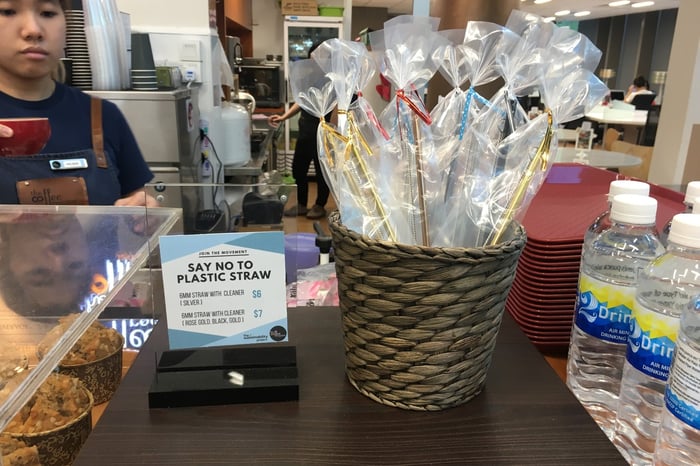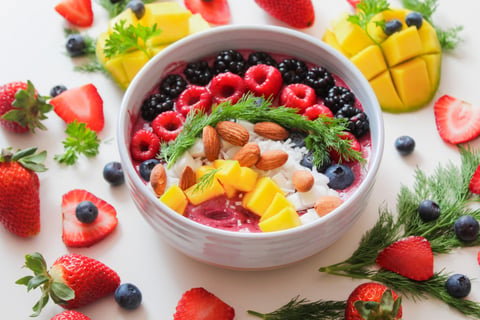 Read to the end of the article to find out how you can get these straws for free!
Read to the end of the article to find out how you can get these straws for free!
Don’t get caught sipping out of an unsustainable, single-use plastic straw when there are so many alternatives around. But sustainability includes everything that happens further up the supply chain, before the straw even reaches our lips. So between bamboo, metal, paper, and other eco-friendly straws, which is really the best?
The sustainable straw bandwagon is still taking off and there hasn’t been much research done on the tangible impacts of a mass switch to these alternatives. As with any consumer trend however, we can make a comparison.
Let’s check out what has happened since single-use plastic shopping bags have been banned in cities and countries around the world in favor of reusable shopping bags.
It has been found that you would have to use the sustainable alternative (cloth or paper) bag at least 104 times to make a difference to the environment instead of using the plastic bag, since cloth and paper bags require more energy and resources to produce. So are our fancy straws any more sustainable?
Bamboo:
 Image: Ami Park
Image: Ami Park
Bamboo straws are in fact carbon-neutral to grow and manufacture. There’s no machinery or by-products involved, unless they are treated with a chemical finish or cure. They’re fully biodegradable, but can create quite the carbon footprint from shipping around the world like many online companies are doing.
Metal:
 Image: Eco-Business
Image: Eco-Business
While stainless-steel metal straws are quite durable, it’s a no-brainer that metal production is not very environmentally friendly. In the US alone, more than 2.8 billion pounds of toxic waste was produced from mining metal per year at the turn of the century. In China, the world’s biggest producer of steel, working conditions are often abysmal. The emissions from producing steel contribute to China’s infamous smog levels. Even after all this (plus the footprint of international shipping) the kicker is that often these metal straws are packaged in plastic anyways.
Paper:
 Image: Carly Jayne
Image: Carly Jayne
Similar to the verdict on plastic versus paper bags, the carbon footprint of making paper straws is actually much higher than for plastic straws. They’re often dyed with different colors and lined with the same plastic film as coffee cups, making them difficult to recycle.
To be fair though, paper straws biodegrade and break down in just 6 months, so if they end up in the ocean they’re safer for wildlife out there like the poor turtle who got a plastic straw stuck up his nose.
But if they don’t end up in the ocean - and it’s far more likely that paper straws will end up in a landfill - they become organic matter breaking down in an anaerobic landfill environment which produces potent methane, adding to the greenhouse gas effect. A bit of a catch 22.
Silicone:
![]() Image: Wear Love Wanders
Image: Wear Love Wanders
Silicone straws are fun, squishy, more flexible, and also far more unnatural. Technically, silicone is classified as a mix of synthetic rubber and synthetic plastic polymer. That’s bad news, because all the hydrocarbons in silicone come from fossil fuels like oil and natural gas.
There are a few other biodegradable varieties of straws made from things like sugarcane fiber or seaweed. All are promising initiatives to swap out plastic straws and ultimately offer a low-hanging fruit for people to hop on board the sustainability train. Making the daily choice to forgo straws is a daily reminder to uphold values of sustainability.
But when it comes to the crux of the plastic problem, straws really don’t matter. I’ll demonstrate why.
Fishing for an answer to ocean plastic
 At least 46 percent of plastic waste in the ocean comes from discarded fishing nets. Image: Jordi Chias | WWF
At least 46 percent of plastic waste in the ocean comes from discarded fishing nets. Image: Jordi Chias | WWF
Once a month, there are a handful of organizations that enlist volunteers to contribute to Singapore’s clean name by joining beach clean ups. Between just two people, more than 100 kg of plastic was collected in under two hours. I only found two squashed straws in total. In fact, plastic straws account for less than 3 percent of the total trash found on beaches.
So despite the fact that enough straws are thrown away to wrap around the circumference of the Earth (in the US alone) more than 2.5 times per day, that’s not nearly the full story of what’s happening in our oceans.
 The iconic 2018 National Geographic cover on the depths of our plastic pollution. Image: National Geographic
The iconic 2018 National Geographic cover on the depths of our plastic pollution. Image: National Geographic
Straws are the tip of an iceberg of some 5 trillion microplastics in the oceans today. Even if all 7.3 billion humans in the world were to toss a straw into the ocean, that would still only make up less than .03 percent of the 8.3 million metric tons of plastic waste that goes into the oceans every year.
It’s no news that we’re drowning in plastic. It’s impossible to comprehend the scale of the problem, and fear mongering isn’t a sustaining motive for change. Fear puts us into fight or flight mode - but we have nowhere to flee to and just one planet to live on.
The other option - fight - means fighting the consumer culture that has brought us to this point, and also fighting for other lives on this planet. The straw debacle shines light on the irony of the fact that we care enough about saving fish to not use straws; but do we care enough about saving fish… to not eat fish?
There is so much more we can contribute beyond choosing a bamboo straw. If you haven’t heard of Sea Shepherd, they’re a fearless organization whose mission is to protect marine life and root out poaching and illegal fishing. Their work includes daring stunts, like sandwiching their ship in between a whaling vessel and an oil tanker to prevent the whalers from refuelling for their Antarctic whale hunting (inside a protected marine reserve). It’s the same tactic as people laying down in front of tanks to protest the military.








